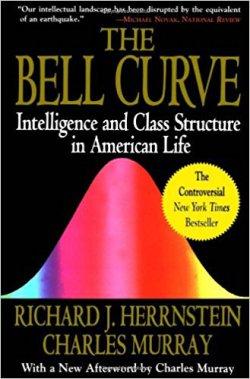 Conservative-leaning activists like to cite the scholarship of Richard J. Hernnstein and AEI’s Charles Murray in relation to the crucial need for intelligence to make America great. The issue, however, is not in the underlying latter concept which is noble in intent, but in the skewed conclusions Hernnstein and Murray set forth in The Bell Curve: Intelligence and Class Structure in American Life. The conclusions of these two authors are derived from the employment of a prejudicial methodology that blatantly ignored alternate findings – findings that did not fit into their pre-conceived, pre-established narrative about the construct of intelligence and its interface with class, race, individual capabilities and so on in the United States.
Conservative-leaning activists like to cite the scholarship of Richard J. Hernnstein and AEI’s Charles Murray in relation to the crucial need for intelligence to make America great. The issue, however, is not in the underlying latter concept which is noble in intent, but in the skewed conclusions Hernnstein and Murray set forth in The Bell Curve: Intelligence and Class Structure in American Life. The conclusions of these two authors are derived from the employment of a prejudicial methodology that blatantly ignored alternate findings – findings that did not fit into their pre-conceived, pre-established narrative about the construct of intelligence and its interface with class, race, individual capabilities and so on in the United States.
Here is a summary of the inaccuracies that have been propagated by Hernnstein and Murray in The Bell Curve with regard to race:
1. The AFQT is not an intelligence test, but a general knowledge test;
2. Intelligence tests are not race-normed. Their verbal and nonverbal subtests are culturally-biased toward, and loaded with, the formalized middle-class and English-based educational system in the nation;
3. Intelligence tests do not assess all components of the multiply defined construct of intelligence;
4. The nativist perspective of intelligence had been debunked;
5. Fluid intelligence operates in environmentally and culturally-contextualized ways;
6. Formal education shapes crystallized intelligence;
7. Racial and ethnic minorities had been excluded for longstanding periods from formal education;
8. Human persons in performance-based settings tend to fulfill expectancy effects according to stereotype threat. These effects are correlated with a change of up to 27 IQ points;
9. Intergenerational intelligence distributions at the filial dimension regress to the mean;
10. Race is a social, not biological or heritable, construct;
11. Consistent African American and Latino mean score differences of about one to one-and-a-half standard deviations below that of Whites and Asian Americans are thought to reflect class and/or other multicultural individual differences (racial identity ego statuses).


